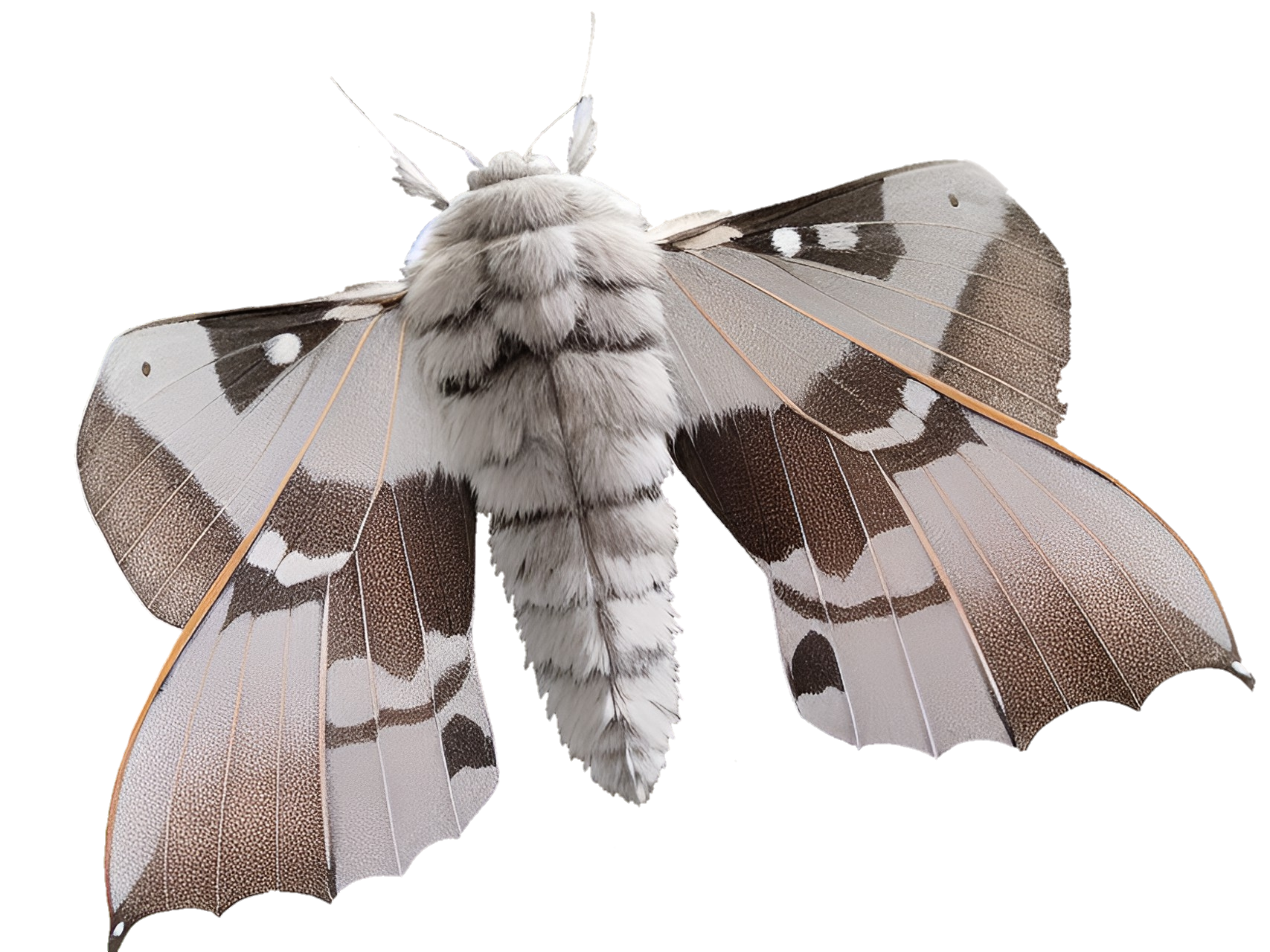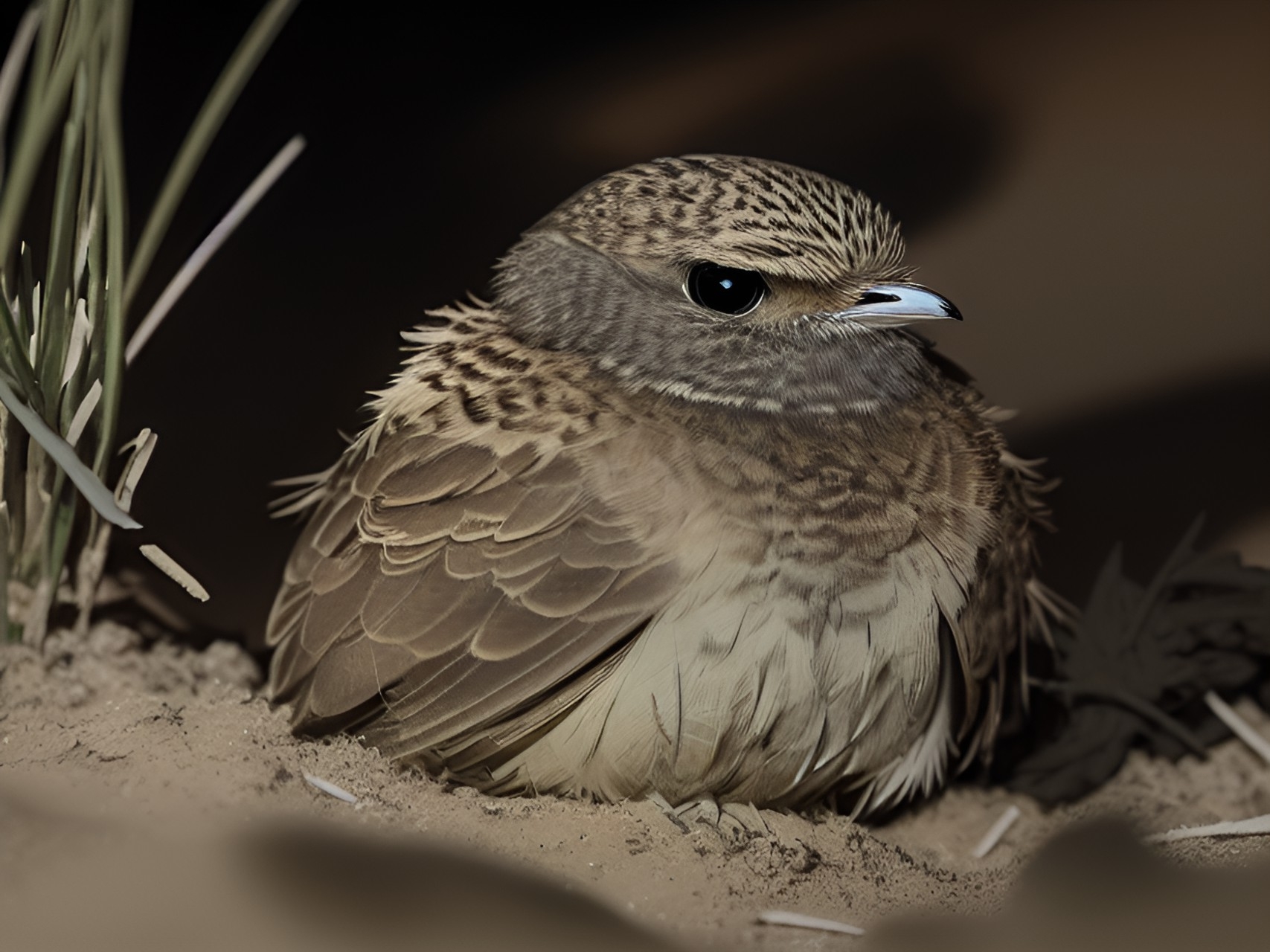Kabus Nightjar
As crimson light bleeds into the sky of Sahra' al-Shamsi, the desert remains frozen in continuous dusk, lit by miniature suns set below the sand. Many crepuscular creatures rouse as the sun overhead sinks beneath the horizon, including the Kabus Nightjar. Its eerie call stirs inextricable dread in the hearts of all who hear them, this peculiar bird's reputation marred by frightful folktales and superstition.
Seemingly emerging from thin air amid twilight, they are almost never spotted during the day. Flitting silently amid the shadows with their unnaturally large mouths agape, they jar travelers in the night with their peculiar and startling song—how could one not speculate the worst of this tiny terror? Its churring call echoes about the dunes, it's notes causing the heart to flutter and stomach to knot. If you linger for too long, terror and panic are sure to set in and if this alone isn't enough, nightmares are known to follow long after an encounter. Despite their treacherous song and mysterious habits, these little birds are otherwise harmless. While some believe they eat the souls of the departed, spoil the milk of cattle or act as an omen of an impending death, in reality kabus nightjars have a taste for only one thing: insects. They flit about the desert sands, plucking up or scooping moths and beetles from the air with gaping mouths and reflective, vacuous eyes. Their infamous song, laced with dark magic, calls out to potential mates and repels would be predators. Yet dangerous or not, they're still quite unsettling!
|
Second AbilityRithaldis' Eye Rithaldis' Sense Nightjars with Rithaldis's Sense are able to feel their environment using radiant energy, anything interacting with it and sense radiant energy in their environment despite barriers. They are also immune to any damage from radiant energy (sunlight, solar plasma, ionizing radiation).
Iska's Skin Those with Iska's Skin can produce layers of ice from their skin and feathers and expand this around themselves into various shapes. They are also unbothered by extremely cold conditions, are immune to ice magic and can cool their skin at will. Most nightjars use this ability to better blend into icy environments and endure frigid temperatures.
Ilnid's Skin Nightjars with Ilnid's Skin can convert their skin and feathers into sand, quartz or glass, differing by individual. They can expand these into jagged glassy spikes, thick sandy insulation or tough quartz armor!
|
Anatomy |
Kabus possess a small body while it's wings and tail are long by comparison, much like other species of nightjar. But most startling is its bizarrely large and gaping mouth. Yet their mouth's purpose is hardly dangerous, meant for scooping flying insects out of the air. It's eyes are large and reflective for the same purpose, alarmingly dialated and unnerving but effective. |
SensesThe kabus nightjar's eerie appearance affords them excellent vision and hearing. Its eyes have a high amount of rods, improving their nightvision which is so vital for a crepuscular hunter. Its sense of hearing is also excellent, one of its most important tools for both hunting and detecting predators. And of course, some Kabus can see or feel radiation, allowing them to navigate the depths of the Shamsi Desert. Their flight is quiet too, strong and deliberate wingbeats alternating with sweeps and motionless glides. In fact their flight is very similar to their favorite prey, moths. |
Habitat |
The Kabus Nightjar has a wide range, spread across northern Alkelbulan, especially Shamsi, Kasar Wuta, Arabiyyah and the Frozen Wastes. This includes Libu, Marrakesh, Kemet, Aznag, Birit Narim, Parsa, Kna'an, Balkurtiz, Dar Emirates, Kanem and some parts of Nyasi za Rangi. These mysterious birds prefer open desert and scattered scrubland, remaining near a water source. Alternately, they might also settle in grasslands or tundra, disliking thick foliage. Yet despite their wide range they are hardly seen during the day, laying directly on sand, snow or gravel and nearly completely blending in thanks to their natural camoflauge. |
Diet |
Kabus are strictly insectivorous, eating moths, beetles, flies, crickets, termites and ants. These are crepuscular hunters, most active at sunset and dusk. Their favorite prey are Solar Moth, Nqurt Ants and Khepri Scarab which flock around the miniature suns of Shamsi. They can sense and consume even these volatile species thanks to their kaithur, wherever they live.
|
Life Cycle |
These eerie birds are most infamous for their characteristic churring call. Their song plays three roles: repelling predators, indicating territory and attracting mates. Males sing to drive away rivals and attract a female, adding a tinge of loneliness to his frightful song. His mate will lay two to four eggs which are brown with spots and blotches for camoflauge. The female incubates the eggs during the day, hiding them with her sandy colored body and she will remain as still as possible to evade detection. Eggs incubate for 19-21 days and hatchlings are fluffy and capable of movemwnt within 24 hours.
When the time comes, hatchlings move away from each other or their parents will push them apart with their feet, flushing them from the nest. The male will stand guard and defend them, their parents feeding them regurgitated insects until they are fledglings. They move their roosting sight daily as well. If a predator invades their roosting site, parents will flush the nest so their chicks scatter and will feign injury as they lead away the threat. This is especially prevalent when targetted by Wata Jackal. The chicks will scatter and freeze, making use of their own camoflauge, not capable of flying until they are 20-21 days old. |















Comments